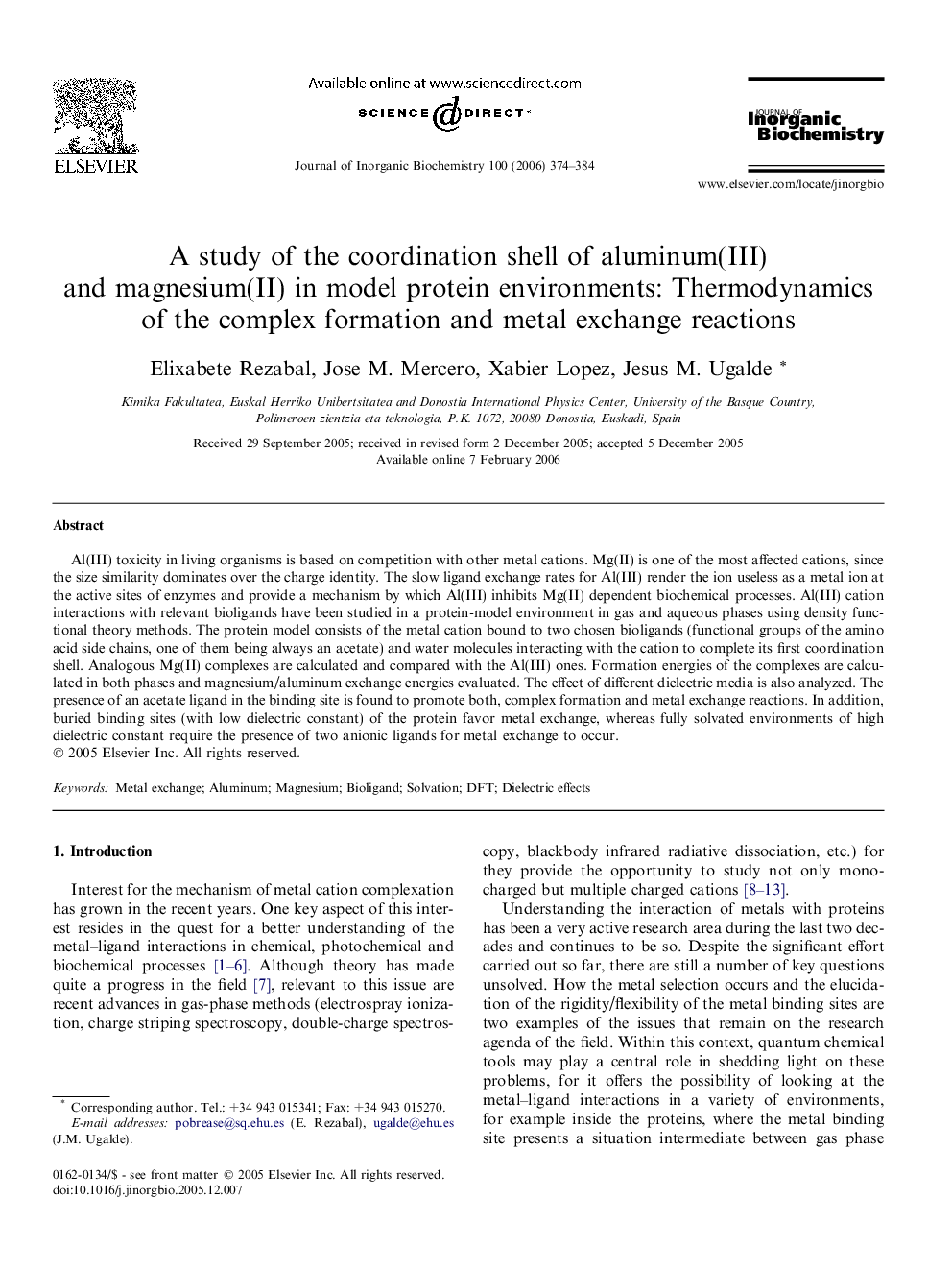| Article ID | Journal | Published Year | Pages | File Type |
|---|---|---|---|---|
| 1316857 | Journal of Inorganic Biochemistry | 2006 | 11 Pages |
Al(III) toxicity in living organisms is based on competition with other metal cations. Mg(II) is one of the most affected cations, since the size similarity dominates over the charge identity. The slow ligand exchange rates for Al(III) render the ion useless as a metal ion at the active sites of enzymes and provide a mechanism by which Al(III) inhibits Mg(II) dependent biochemical processes. Al(III) cation interactions with relevant bioligands have been studied in a protein-model environment in gas and aqueous phases using density functional theory methods. The protein model consists of the metal cation bound to two chosen bioligands (functional groups of the amino acid side chains, one of them being always an acetate) and water molecules interacting with the cation to complete its first coordination shell. Analogous Mg(II) complexes are calculated and compared with the Al(III) ones. Formation energies of the complexes are calculated in both phases and magnesium/aluminum exchange energies evaluated. The effect of different dielectric media is also analyzed. The presence of an acetate ligand in the binding site is found to promote both, complex formation and metal exchange reactions. In addition, buried binding sites (with low dielectric constant) of the protein favor metal exchange, whereas fully solvated environments of high dielectric constant require the presence of two anionic ligands for metal exchange to occur.
